What would you rather have: a 32-inch flat screen TV for $100 or a 72-inch flat screen TV for $150? After considering the first 32 inches cost $100, you would probably pay the additional $50 for another 40 inches.
This same principle can be thought of in terms of testing and optimization, with one caveat — you have to buy the 32-inch TV first.
A discovery, not a lift
Many attempting to optimize and test within webpages want big lifts; however, here at MECLABS Institute, we always say the goal of a test is not to get a lift but to gain discoveries about customer behavior. This makes sense on face value, but to be honest, when I first heard the expression, I thought to myself, “Well sure, that sounds like a good backstop in case you don’t get a lift.” However, I soon learned that it is more than a backstop or worse — an excuse.
As the curator for Dr. Flint McGlaughlin’s personal website, I often come across insightful observations. This next excerpt speaks particularly well to this topic of optimization and testing to obtain more than just a lift:
Too often, marketers are focused on results instead of reasons. We need to move deeper than ‘how much,’ into ‘why so,’ to answer an even more important question: What does this tell me about my customer or prospect? And so the goal of an optimization test transcends the notion of a lift and asks for learning. With sufficient insights, we can obtain the ultimate lift. The more you know about the customer, the easier it is to predict their behavior. The easier it is to predict their behavior, the more you know about your value proposition. — Flint McGlaughlin
I have bolded what I think is the most important part of that quote for the sake of our discussion today. I am going to repeat it because it is so significant: “The goal of an optimization test transcends the notion of a lift and asks for learning. With sufficient insights, we can obtain the ultimate lift.” — Flint McGlaughlin
Now we may ask ourselves, “What is the ultimate lift”? Some may think it is the biggest or most important criteria on some arbitrary scale. In my opinion, the “ultimate” lift is gaining insight into your customer and your value proposition that can be leveraged across all marketing channels.
Value Proposition 101
Before we go any further, if you are reading this article and do not know what I mean when I say “value proposition,” I urge you to investigate our research specifically around value proposition. However, for the sake of brevity (and this blog post), here is the oversimplified crash course:
A company’s value proposition is essentially trying to answer the question “If I am your ideal prospect, why should I buy from you rather than your competitors?”
The answer should be a “because” statement that stresses the appeal and exclusivity of the offer in a clear and credible way. The offer also needs to be supported by factual claims which will add to the credibility of the offer.
Testing for the “ultimate lift”
Now that we have a basic understanding of a value proposition, here is an example from a past MECLABS Research Partner. In this experiment, we achieved the “ultimate lift” because of customer discoveries gained through value proposition testing.
Experiment ID: TP1306
Background: Provides end-to-end market solutions for small and medium-sized businesses.
Primary Research Question: Which page will obtain the most form submissions?
CONTROL
After analyzing the offer on the page, MECLABS analysts identified the following value proposition for the offer.
Value Proposition: “Because we have the most comprehensive(1) and accurate(2) lead database.”
- This includes access to over 210 million U.S. consumers, 16 million U.S. businesses and 14 million executives.
- We have a team of 600 researchers that verify the data daily and make over 21 million verification calls a year, 80,000 calls a day.
Then the analysts at MECLABS reformatted this value proposition in a clearer way on the Treatment page with the supporting claims.
TREATMENT
Notice how quickly the supporting claims help guide you to making the ultimate decision of “the most comprehensive and accurate lead database.” When you make a claim as a marketer, people are naturally inclined to find holes in the claim or argument.
However, when you guide someone to a conclusion (using things like supporting claims), they will own the idea themselves and believe in it.
The difference between the Control and Treatment can be summed up in these two pieces of each:
CONTROL
TREATMENT
Not only does the optimized version add clarity, but it also adds credibility to the value proposition.
The result of this test was a statistically significant relative 201.3% increase in captured emails.
Someone may think that this was where the testing should stop or that this was a good enough result to be happy with. At this point as a marketer, you have purchased your 32-inch flat screen TV.
However, the team wanted that 72-inch screen, so we decided to continue testing this value proposition and the customer insights we were beginning to theorize. From there, a second aesthetic test was performed, which yielded a 2% increase, followed by a third interpretation, which confirmed a transferable customer insight, yielding a 29% lift.
At this point in the experimentation, the team learned what value proposition elements and claims mattered most to this audience. At this stage in testing, the team had achieved more than just a lift. They had a solid and transferable customer insight.
Next, a slightly modified version of the Treatment was rolled across other channels, including other landing pages and PPC campaigns.
Attaining that “ultimate lift”
Further testing resulted in significant gains across all channels. This is the 72-inch TV. This is the “ultimate lift” which all originated from identifying the value proposition, leveraging it through testing to gain customer insights and then using this knowledge across all messaging.
Now to circle back, the goal of a test is not to get a lift but a discovery. Even if that first test resulted in a decrease in emails captured, customer discoveries could be gleaned from that Treatment.
If a prospect says “no” to an offer, you can rule that out for further testing and begin to hone in on what is appealing to your audience.
“The more you know about the customer, the easier it is to predict their behavior. The easier it is to predict their behavior, the more you know about your value proposition.” — Flint McGlaughlin
As these tests show, the more you know about your value proposition, the easier it is to holistically communicate your (successfully proven) offer across all channels.
You might also like
Lead Generation: Is your registration form part of the customer journey? [More from the blogs]
Marketing Research Chart: What information do marketers ask for on list
registration forms? [MarketingSherpa chart]
Email Personalization: Craft forms with purpose [More from the blogs]



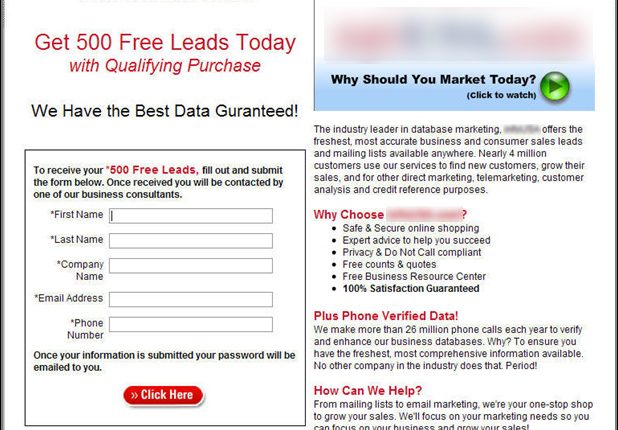
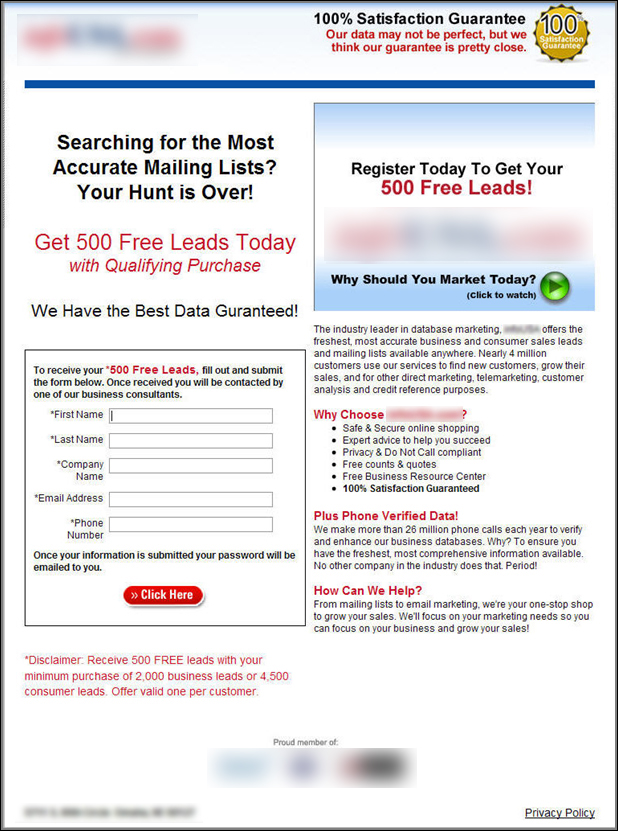
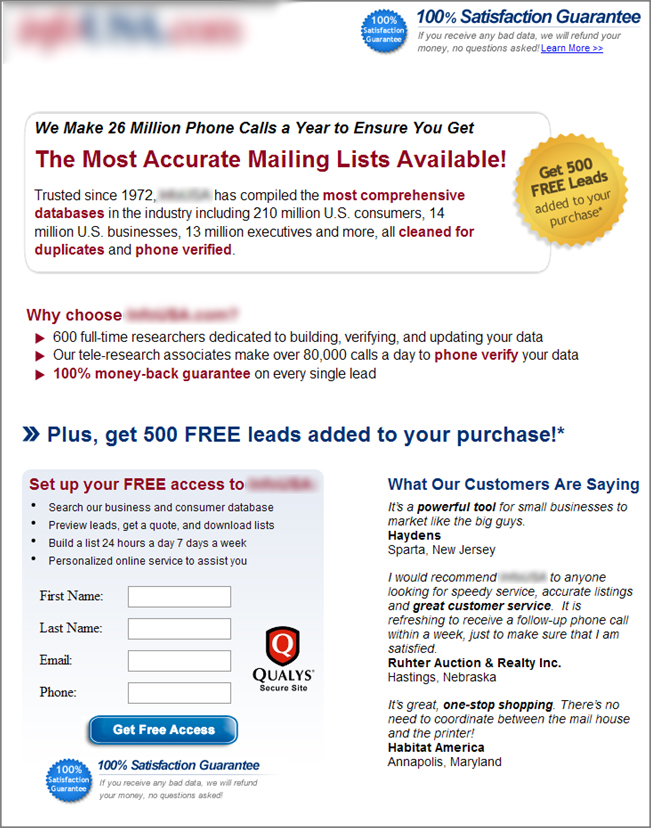
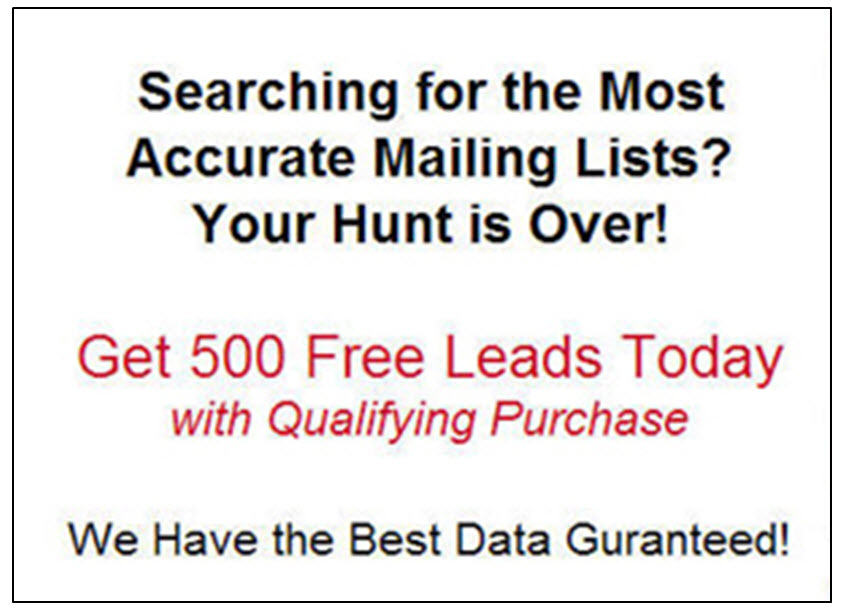
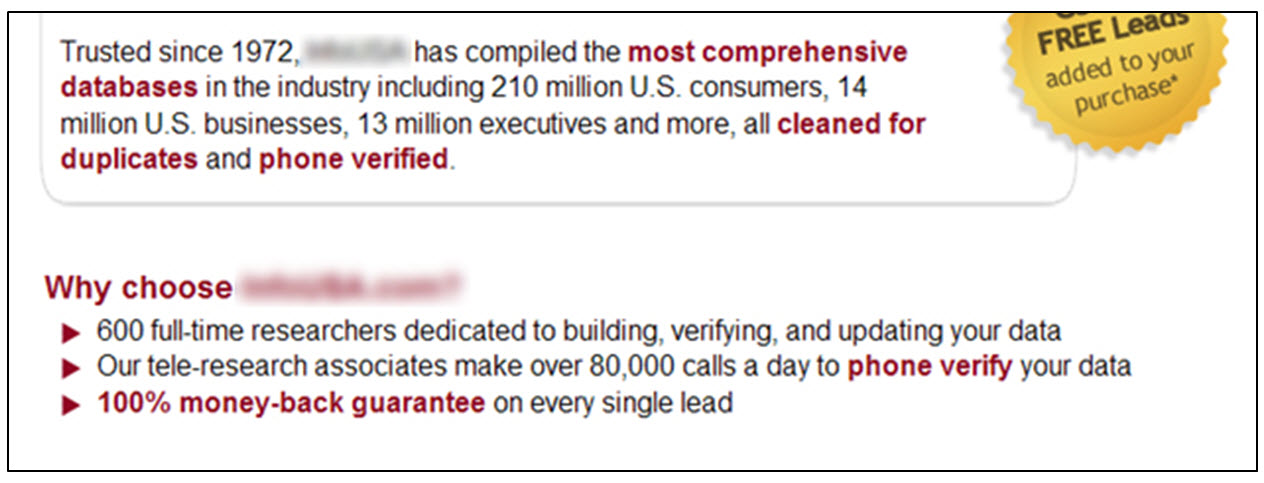

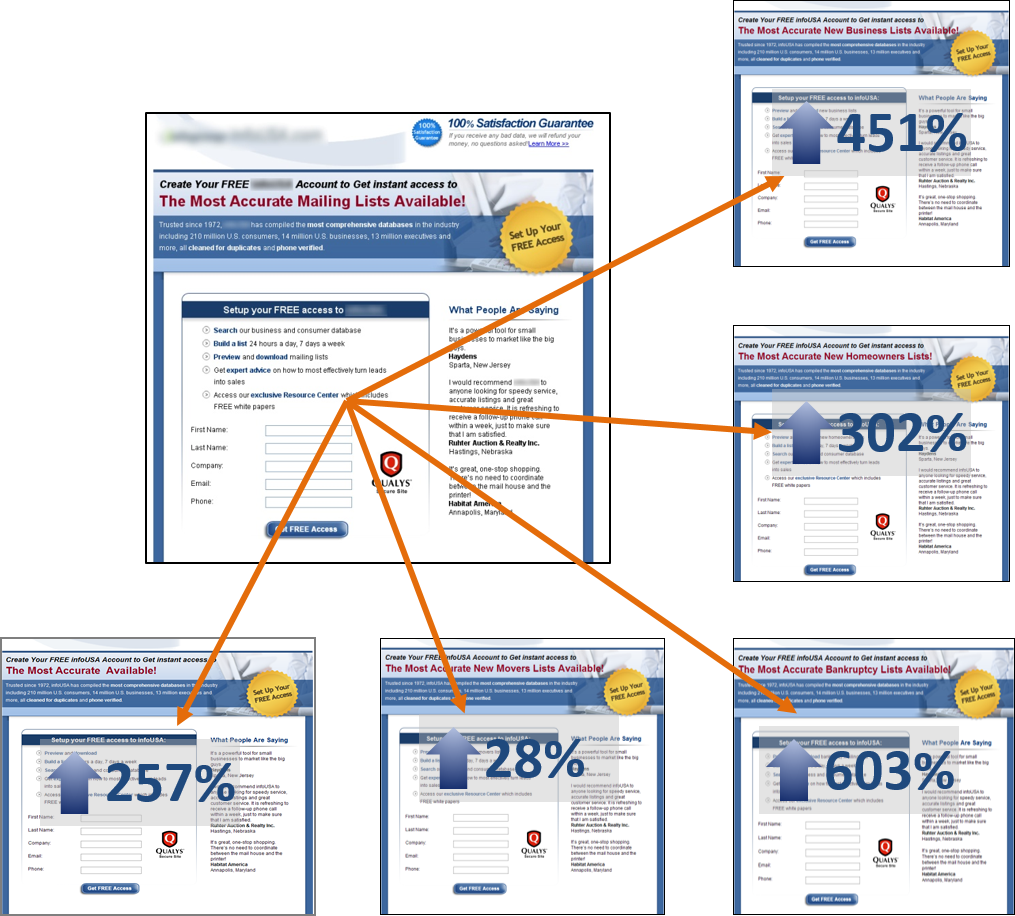
Love the post! I don’t think you can get a better list WITHOUT testing. Time and time again I argue with people about what works and what probably won’t work. Forget arguing, test, test, test! It’s too easy to go to market with several different types of your product or service and get feedback about what your audience likes and doesn’t like.
Thanks for the tips!
Jullian
Just found your blog. This is very well-thought-out and detailed. Thanks for taking the time to put this together!